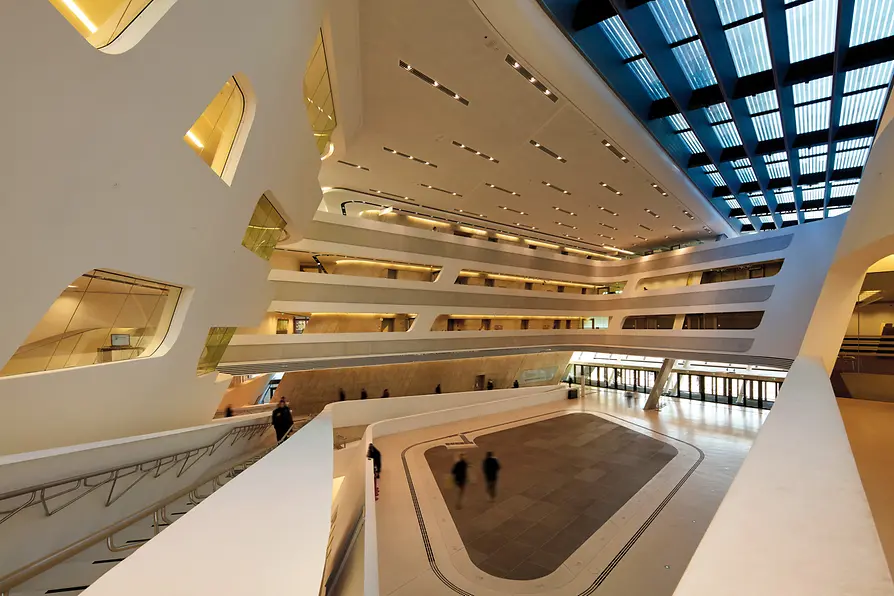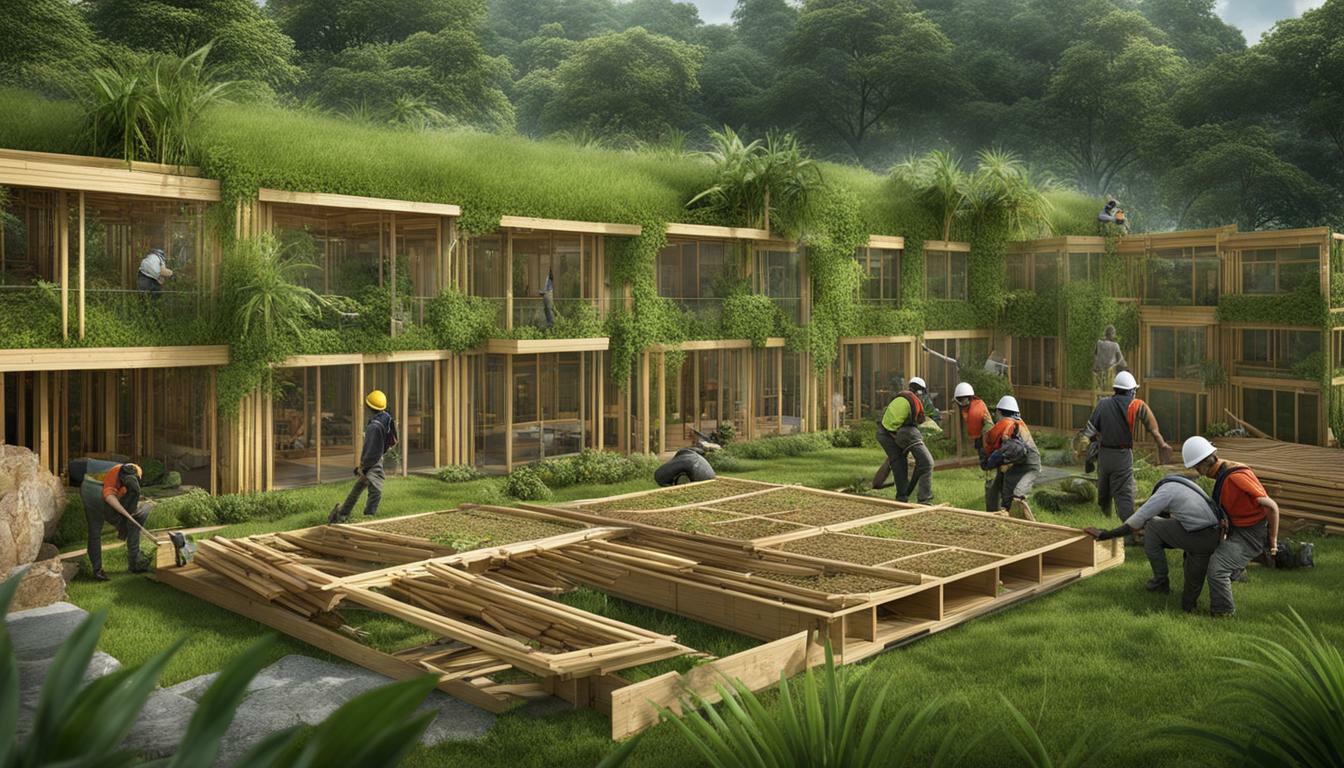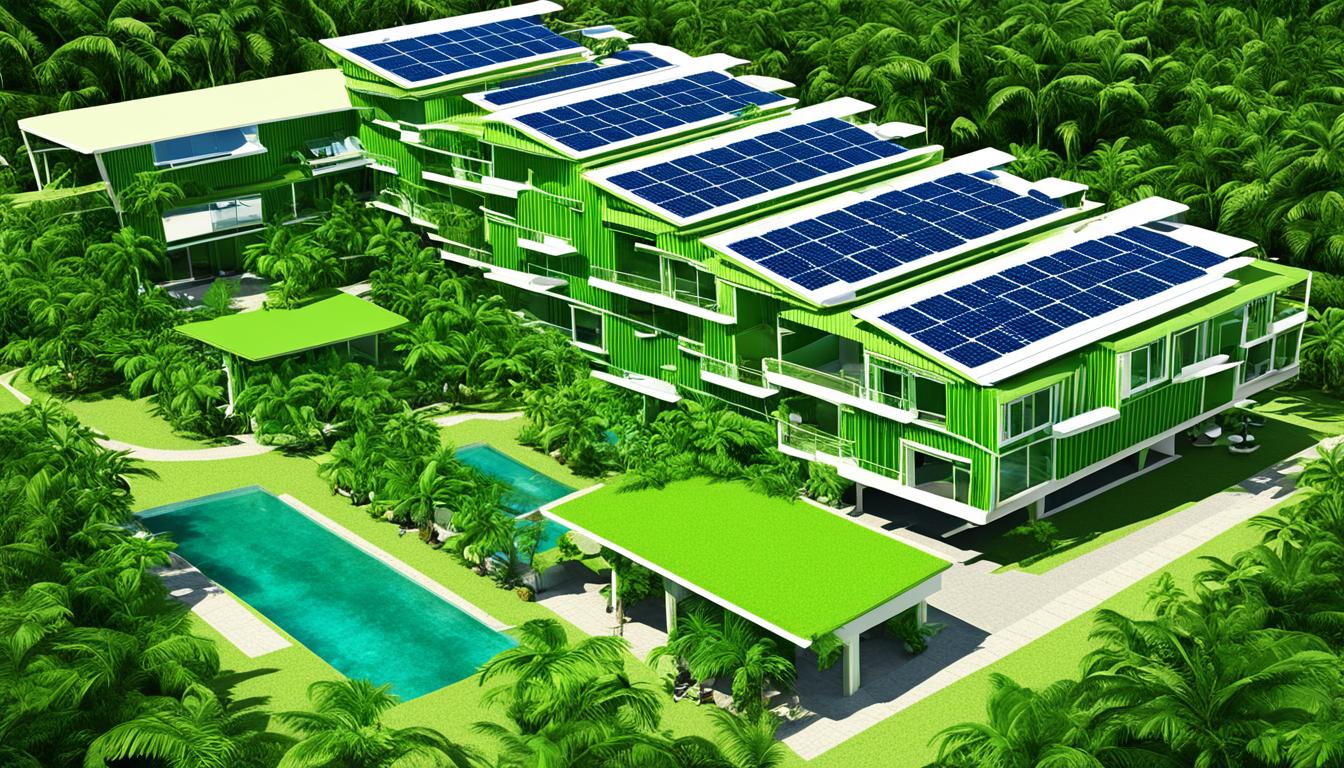Austria Top Green Buildings – A Guide
With the increasing global concern for the environment, sustainable architecture has become a critical consideration for the construction industry. Austria has been at the forefront of this movement, with many buildings designed to significantly reduce their environmental impact. From green roofs to innovative energy-efficient systems, Austria’s top green buildings showcase the country’s commitment to creating a more sustainable future.
Sustainable architecture in Austria prioritizes environmentally friendly construction techniques, energy-efficient systems, and the use of renewable materials. With the aim of reducing carbon footprints, these buildings are designed to minimize their impact on the environment and improve the quality of life for their occupants.
From residential to commercial structures, Austria boasts a range of green buildings that have been recognized for their innovative design and energy efficiency. These buildings use eco-friendly construction materials, such as wood and recycled materials, which ensure minimal environmental impact.
Austria Top Green Key Takeaways
- Austria’s top green buildings prioritize environmentally friendly construction techniques and energy-efficient systems.
- These buildings are designed to reduce their carbon footprint and improve occupants’ quality of life.
- Austria’s commitment to sustainable architecture has led to the creation of innovative and award-winning green buildings.
Sustainable Architecture in Austria
Austria is a pioneer in sustainable development and green building design. The country has made significant strides in promoting eco-friendly architecture, which prioritizes energy efficiency and environmental impact reduction. Eco-friendly architecture in Austria is not just about constructing green buildings; it is about creating a sustainable future for generations to come.
A prime example of this is the Vienna University of Economics and Business (WU), which is one of the largest and most modern academic institutions in Europe. The building’s unique design was the result of an international architectural competition that aimed to create a sustainable urban campus. The WU building design is innovative, aimed to reduce energy consumption, and features excellent indoor air quality. The building’s roof is covered with photovoltaic panels, which generate more than 40% of the required electricity, and the façade is covered with a dynamic sun protection system, minimizing solar heat gain.

Another example is the Klimaaktiv Gold-certified T-Center St. Marx in Vienna, which is a net energy-plus building. The building generates more energy than it consumes, thanks to its photovoltaic and solar thermal systems. The T-Center is also an excellent example of sustainable development in Austria because it is built on the site of a former gasworks, a contaminated industrial site that was successfully remediated and transformed into an eco-friendly office building.
Austria’s sustainable architecture extends beyond office buildings to housing developments, such as the Lakeview Apartments in Vienna. These apartments are built to passive house standards, which require a maximum heating and cooling demand of 15 kWh per square meter per year. The Lakeview Apartments feature a highly insulated building envelope, triple-glazed windows, and a mechanical ventilation system with heat recovery, ensuring excellent indoor air quality, comfort, and energy efficiency.
In conclusion, Austria’s commitment to sustainable architecture is admirable. Green building design, sustainable development, and eco-friendly architecture are crucial elements of Austria’s proactive approach to reducing its carbon footprint and creating a sustainable future. The country has shown that it is possible to build green buildings that are not only aesthetically pleasing but also energy-efficient and environmentally friendly.

Austria Top Green Buildings
If you’re interested in environmentally friendly buildings, Austria has some of the best examples of sustainable architecture in the world. These buildings prioritize energy efficiency and use of green construction materials, resulting in significantly lower carbon footprints. Here are some of Austria’s top green buildings:
| Name | Location | Description |
|---|---|---|
| The “Breathe” Building | Vienna | This building is an example of a passive house, which means it produces more energy than it consumes. It features an innovative ventilation system that ensures fresh air is circulating throughout the building. |
| The PlusEnergy House | Innsbruck | This house is a great example of how energy-positive buildings can look. It produces five times more energy than it consumes, thanks to its photovoltaic facade and geothermal heating system. |
| WWTF Research Centre | Vienna | This research centre was built using recycled materials and features a green facade that absorbs CO2 from the surrounding area. It also has a rainwater harvesting system that reduces water consumption. |
| The House At Lake Constance | Bregenz | This house has a unique design that blends seamlessly into its natural surroundings. It features a green roof that provides insulation and reduces heat transfer, and a heat pump that uses the lake to regulate indoor temperature. |
These buildings showcase the possibilities and benefits of environmentally friendly construction. Their use of green construction materials and energy-efficient systems not only help to reduce carbon emissions, but also create healthier and more sustainable living spaces.

Moreover, the use of such design and construction techniques in buildings in Austria is not limited to residential structures, but also include commercial buildings and public architecture such as schools and museums. Austria’s commitment to sustainable architecture is also evident in its push for zero-energy buildings and city districts, which aim to create completely self-sufficient areas that generate their own energy using renewable sources.
If you’re interested in green buildings, Austria is a great place to explore and discover some of the most innovative and sustainable architecture in the world.
Benefits of Sustainable Architecture and Energy-Efficient Buildings in Austria
Green buildings are becoming increasingly popular in Austria, and for good reason. The benefits of sustainable architecture and energy-efficient buildings are numerous, ranging from environmental to economic advantages.
Environmental Benefits
Sustainable architecture in Austria prioritizes the use of environmentally friendly materials and strategies for reducing resource consumption. By using renewable energy sources, such as solar or geothermal energy, green buildings help to reduce the carbon footprint and mitigate climate change. They also incorporate water conservation techniques, such as rainwater harvesting and greywater recycling, to reduce water usage and promote water sustainability.
Energy-efficient buildings in Austria consume less energy than traditional buildings, thanks to innovative design strategies that prioritize natural light and ventilation, as well as the use of high-performance insulation and efficient heating and cooling systems. This means reduced greenhouse gas emissions and a lower overall environmental impact.
Economic Benefits
While green buildings may require a higher initial investment, the long-term economic benefits are significant. Energy-efficient buildings are designed to reduce energy consumption, resulting in lower utility bills and operating costs. Sustainable architecture also contributes to improved indoor air quality, which can have positive impacts on occupant health and productivity.
In addition, green buildings are becoming increasingly attractive to tenants and buyers, as they are seen as a desirable and forward-thinking choice. This can lead to increased property values and higher occupancy rates.

In conclusion, sustainable architecture and energy-efficient buildings are not only beneficial for the environment but also for the economy. Investing in green buildings can lead to reduced energy consumption, improved indoor air quality, lower operating costs, and increased property values. It is clear that Austria’s commitment to environmentally friendly construction is a wise investment for the future.
Conclusion
In conclusion, Austria has emerged as a global leader in sustainable architecture and green building design. Through the use of eco-friendly construction materials, energy-efficient systems, and innovative design strategies, Austria’s top green buildings have set a benchmark for environmentally friendly construction practices.
The significance of sustainable architecture and energy-efficient buildings cannot be overstated. They not only contribute to a healthier environment but also have a positive impact on the quality of life for residents. The reduction in energy consumption and carbon footprint has far-reaching implications for the future of our planet.
Looking ahead
As the world becomes increasingly aware of the need for sustainable development, Austria’s commitment to environmentally friendly construction places it in a unique position. With ongoing research and development in green building design and construction, the country is well poised to continue leading the way in sustainable architecture.
We hope this guide has provided you with a better understanding of Austria’s top green buildings and the importance of sustainable architecture. Let’s continue striving towards a greener future!
FAQ
Q: What are green buildings?
A: Green buildings are structures that are designed and constructed using environmentally friendly practices and materials. They prioritize energy efficiency, sustainability, and minimizing their impact on the environment.
Q: Why is sustainable architecture important in Austria?
A: Sustainable architecture is important in Austria as it helps to mitigate climate change, reduce energy consumption, and promote a healthier environment. It also contributes to the country’s commitment to sustainability and ensures a better quality of life for its residents.
Q: What makes a building eco-friendly in Austria?
A: An eco-friendly building in Austria incorporates various elements such as energy-efficient systems, use of renewable energy sources, proper insulation, and sustainable construction materials. It aims to minimize energy consumption, reduce waste, and have a low carbon footprint.
Q: How can green buildings benefit the environment?
A: Green buildings benefit the environment by reducing greenhouse gas emissions, conserving natural resources, improving air quality, and promoting biodiversity. They also contribute to a more sustainable and resilient built environment.
Q: Are green buildings more expensive to construct?
A: While green buildings may initially require a higher upfront investment, they can result in long-term cost savings through reduced energy and water consumption. Additionally, government incentives and rebates are often available to offset the initial costs of green construction.
Q: How can I find green buildings in Austria?
A: You can find green buildings in Austria by researching sustainable architecture projects, consulting green building certifications such as LEED or BREEAM, or contacting local architectural and construction firms specializing in eco-friendly design.








